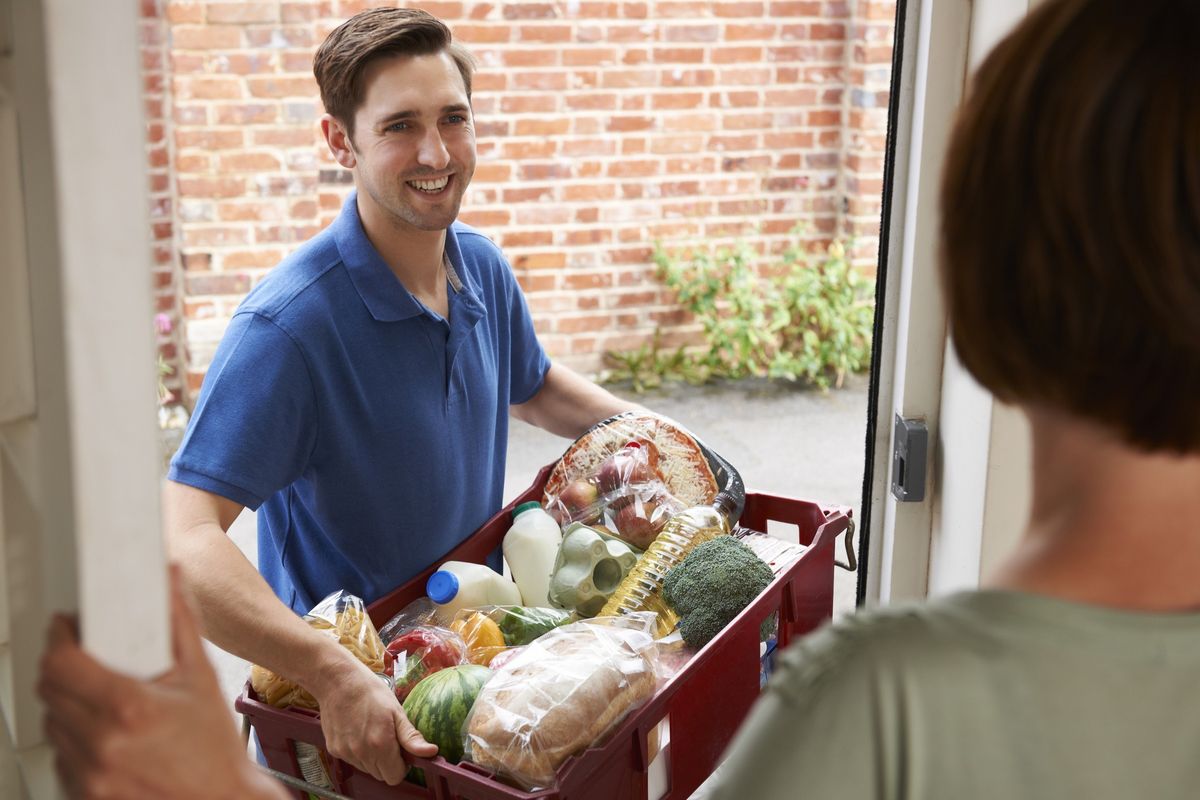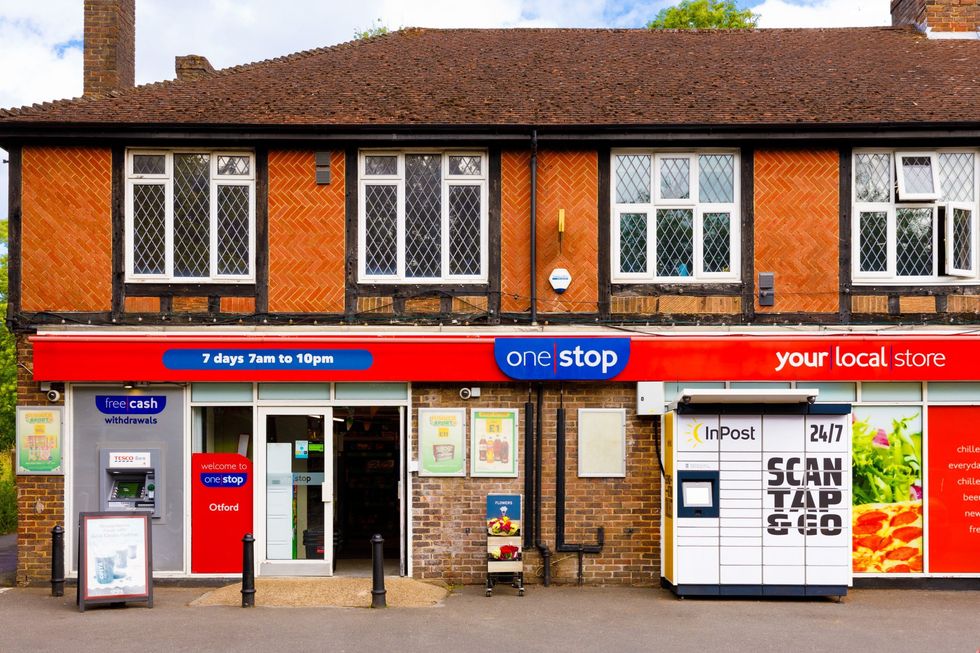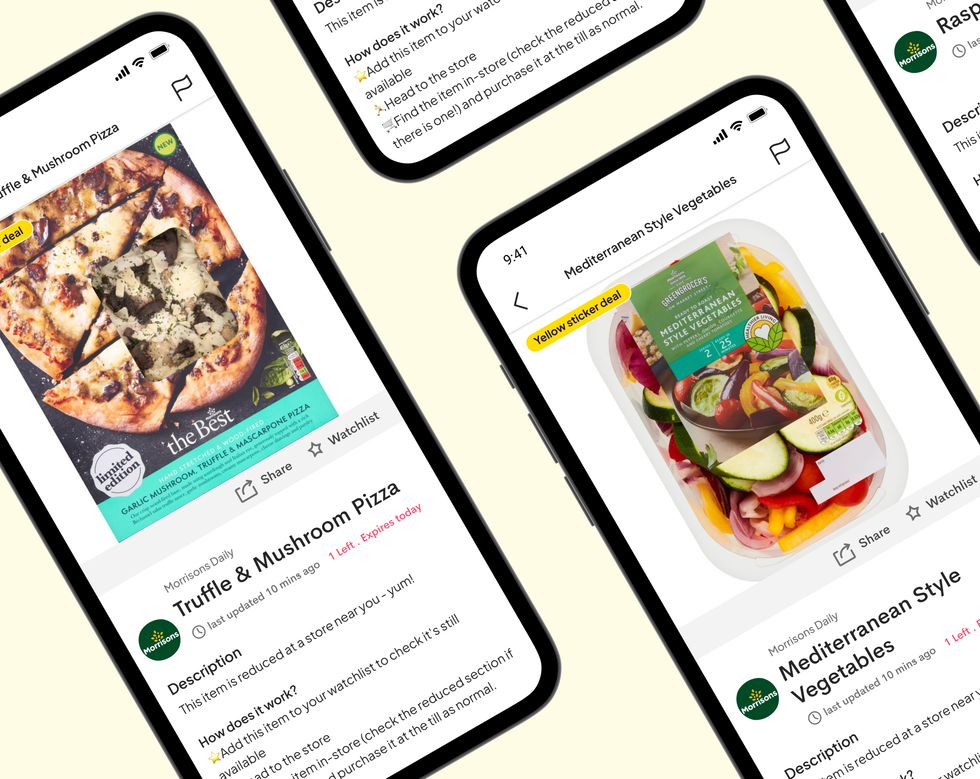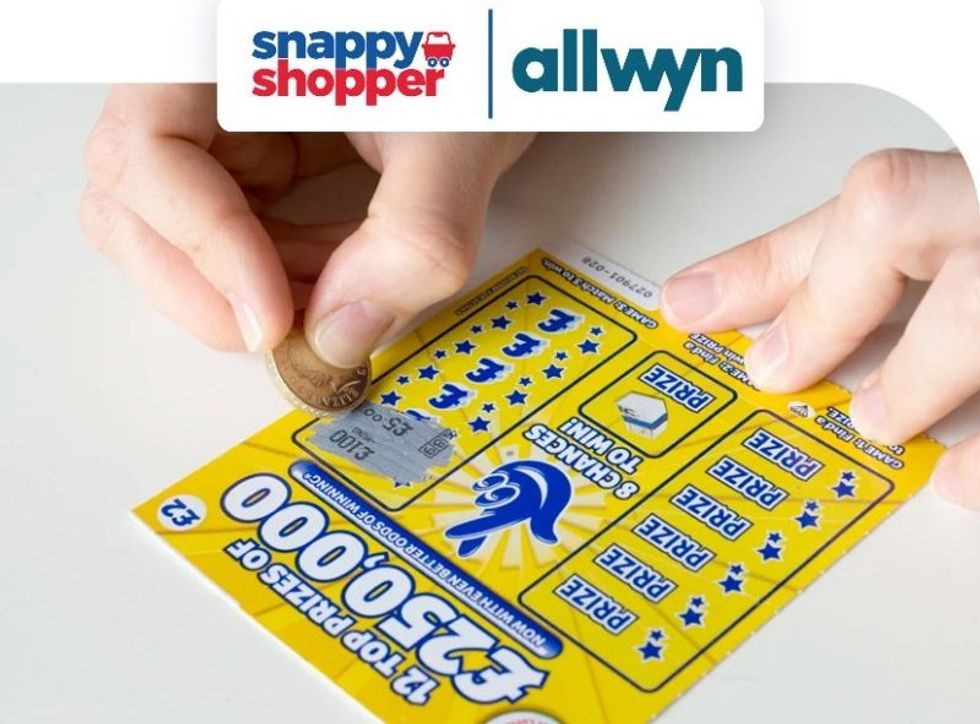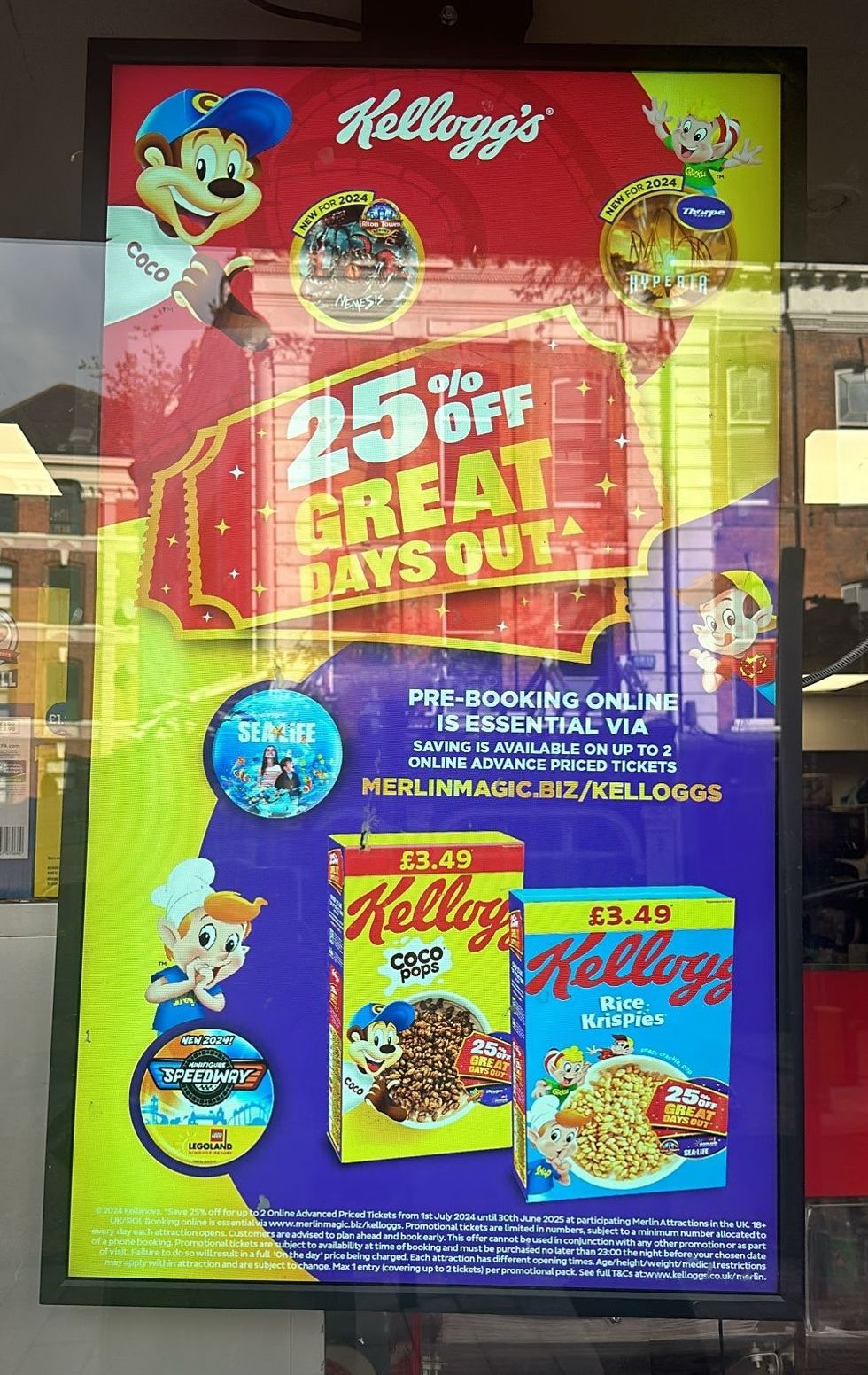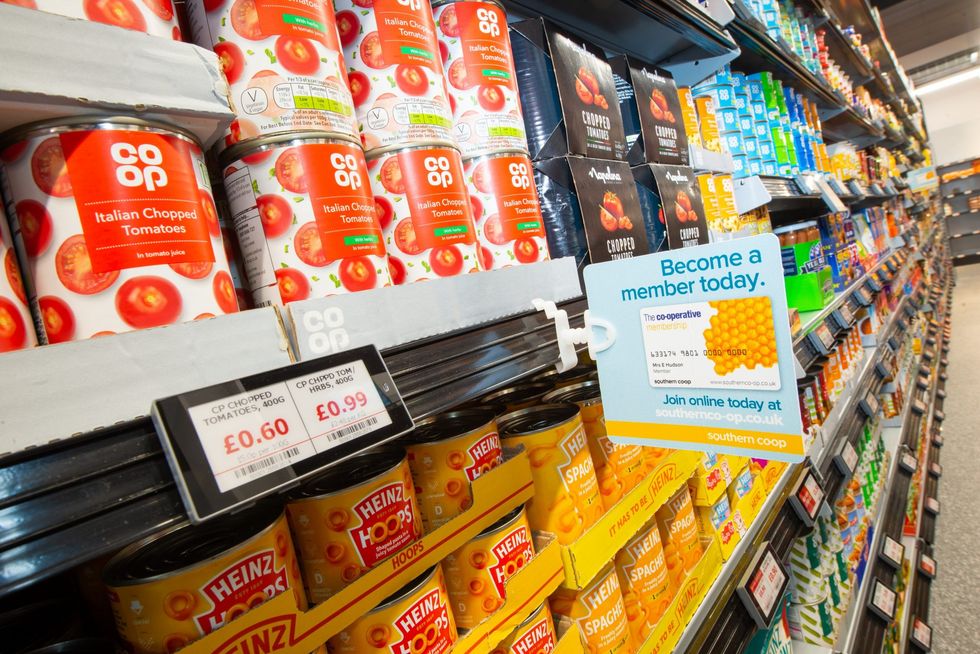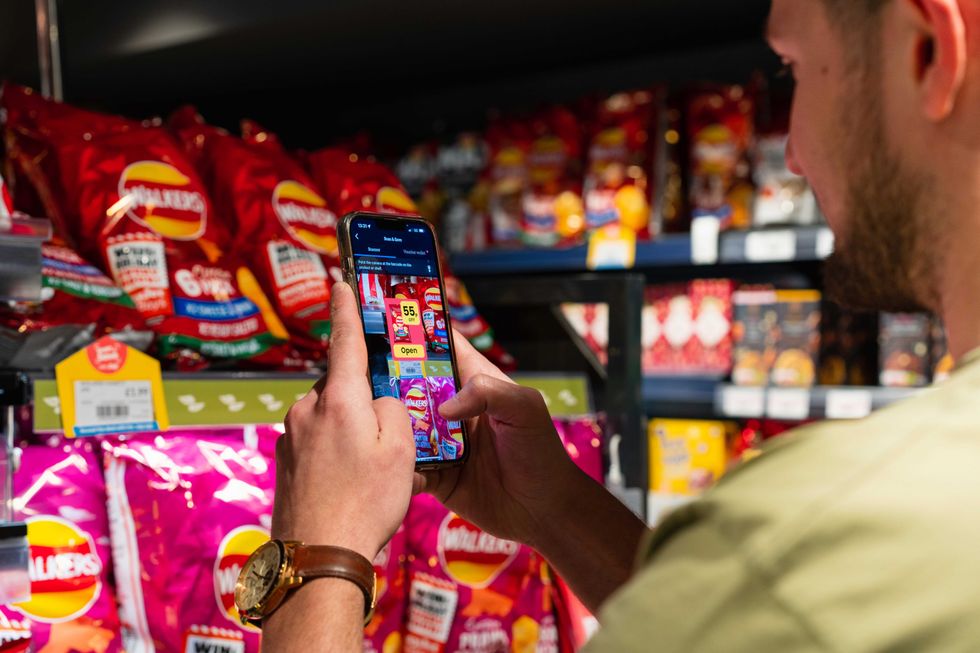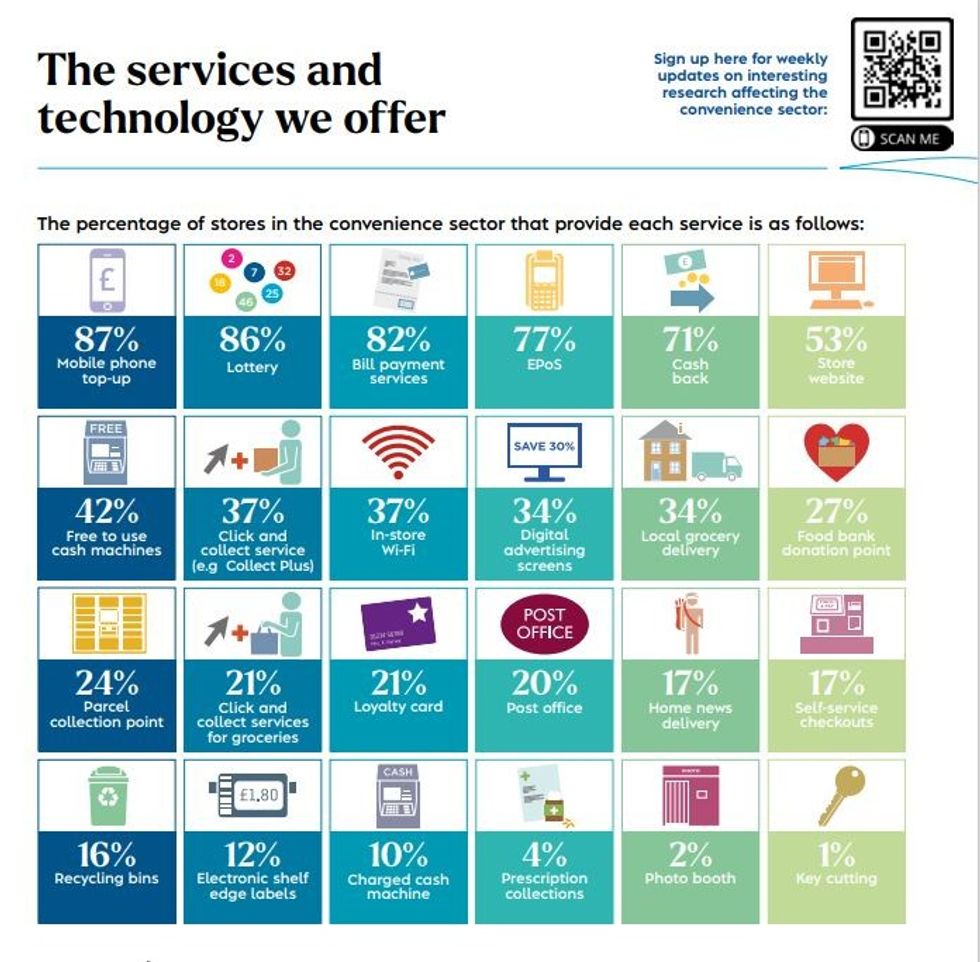As the channel evolves further, the services it offers – to help both retailers and consumers – are making the neighbourhood store an all-in-one solution
The transformation of the c-store from a simple grocery shop to services-centre and delivery hub has been happening for a good while now. This was partly due to digital evolution, which upgraded ePOS systems from glorified tills to proper digital stock-taking enterprises.
It eventually matched them with shoppers’ smartphones to facilitate purchases, and then with ordering and delivery add-ons through apps such as Snappy Shopper and Jisp.
Partly, the c-store embiggening was also accelerated by the Covid lockdowns, which through necessity and desire made c-stores the living centres of their community, dispensing meals and medicines, and delivering goods and groceries across their catchment areas – especially to the vulnerable who might have been temporarily imprisoned in their homes.
What often also happened was, that once a store went “online”, because shoppers could see what was in stock and order it to-go, either picking up (saving time on filling baskets) or having an order delivered (saving time with a little extra cost – but sometimes not even that), storeowners found that their catchment areas expanded, sometimes dramatically: they were often now selling to people who had never even visited their store previously.
In addition, instead of popping out for milk or a packet of cigarettes, shoppers now began to think of their local store as a major supplier for all their needs, nearby and literally convenient, giving the channel another edge over the multiples.
Services
There are traditional services supplied by c-stores that have recently been renewed in importance – for example, banking facilities supplied by sub-post offices, which have gained in importance for bill-paying and securing cash, what with the ever-faster and wide-ranging closures of banks in local towns and now in cities, too. The simple ATM is also more vital than ever.
During lockdown, cash had withered as cards were used far more, but since that time, the folding stuff has made a comeback, especially among the older and less well-off, and as people have found that when using physical money, you tend to spend less!
Recently, in the wake of ongoing bank shut-downs, UK banks agreed to set up 350 "banking hubs" to address the impact of thousands of closures, with one lender announcing it was closing 55 more branches.
City minister Tulip Siddiq secured the industry's agreement for the hubs rollout over the next five years (until 2029) at a meeting with representatives of all the major high-street banks, saying that, "Banking hubs are a lifeline for local communities that have lost their final bank branch".
Siddiq added, "I'm confident that the banks will deliver on the commitment made today, as well as take a more active approach to meeting the needs of local communities."
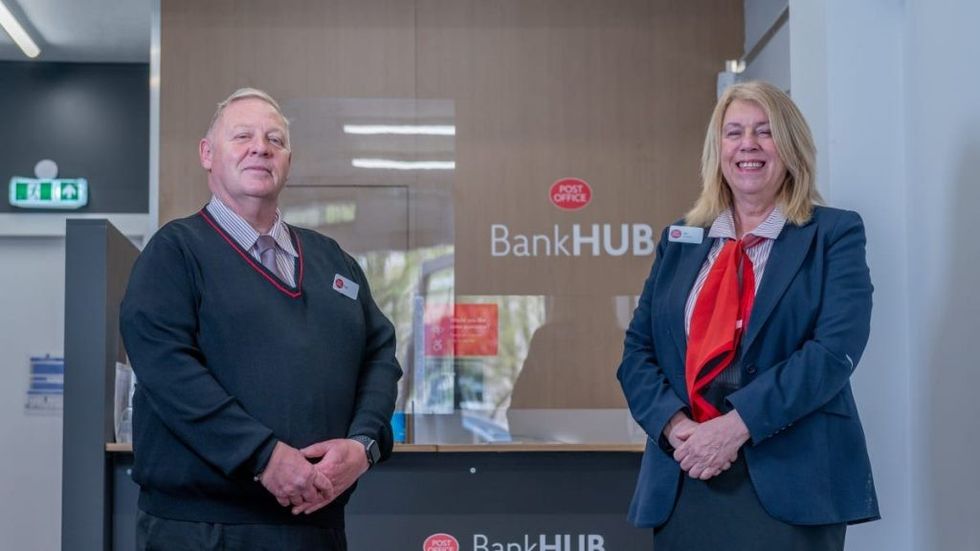
However, the form these hubs will take, the exact services they will offer (will customers be able to print out statements and pay in cheques?) remains to be seen, and already “cash activists” are claiming banks are slowing down the process of opening the hubs.
The ministry said Siddiq was given a commitment at the meeting that the industry delivery body, Cash Access UK, would look at the "feasibility of having printers in its hubs".
However, speaking to Asian Trader, Ron Delnevo from cash champions Payment Choice Alliance, said, "The number of 350 [hubs] by 2029, seemingly agreed with Tulip Siddiq at the Treasury, is wholly inadequate. The CEO of Cash Access UK had already agreed to have 200 open by the end of 2025. 350 by 2029 is actually a drastic slowing down of the opening programme."
A YouGov survey reported that 88 per cent of the public do not support the UK becoming a so-called “cashless” society while 71 per cent of the British public want a law put in place to guarantee they can use cash, where and when they choose.
What this means is that ATMs and post office services – and increasingly other services offered in convenience stores by companies such as PayPoint, will become ever-more important to local communities, cementing even more firmly the need for, and importance of, local shops.
Lockers, collection, delivery
With all things Amazon and online, local c-stores, far from being cut out of the customer purchase route, are instead becoming collection and delivery / return points. In addition to the welcome fees these services bring, they also serve to increase footfall and customer presence in general at shop sites, which inevitably helps to sell more goods, either as a planned shopping / pick-up trip, or as an impulse purchase during another mission.
The point is that c-stores are making themselves magnets for all sorts of missions and services, and that there are companies and apps that are helping them to be successful in this.
Parcel lockers are a guaranteed way to bring customers to your site. Out-of-home delivery and parcel locker company InPost has just celebrated the installation of its 100th One Stop parcel locker, marking another milestone as it expands its network with one of the best-recognised convenience retailers in the UK, underscoring InPost’s commitment to growing the availability of its parcel lockers across the UK.
The collaboration with One Stop has seen a rapid deployment of InPost Lockers, offering customers a reliable out-of-home (OOH) delivery option. With 24/7 accessibility, InPost Lockers provide unparalleled convenience for busy shoppers looking to collect or return parcels on their own schedule. The first locker was deployed in November 2023 at a One Stop location in Derbyshire, with the initial goal to reach 100 lockers by now, achieved nearly three months ahead of schedule.
One Stop’s ongoing modernisation efforts and its focus on enhancing customer convenience perfectly align with InPost’s offering, with research showing that convenience (36 per cent), lower costs (19 per cent) and speed (17 per cent) are the top three reasons for choosing lockers. The introduction of more InPost Lockers at One Stop stores not only supports One Stop’s strategy to improve in-store services, but also caters to the growing consumer demand for flexible OOH delivery solutions.
With One Stop’s network of over 1,000 stores nationwide, InPost aims to continue this growth trajectory, ensuring more communities benefit from its convenient, cost-effective and more sustainable delivery service. With more than half of UK consumers now using delivery lockers for online purchases, this partnership exemplifies how retail and logistics collaborations can drive enhanced accessibility in a fast-evolving retail landscape.
Last month, InPost displayed its new Collect service at this year’s e-Commerce Expo which will allow e-commerce retailers to offer delivery to any of over 8,000 InPost Lockers directly at c-store checkouts. Lockers provide a fast, convenient and cost-effective solution that caters for shoppers' needs, allowing them to securely collect their online purchases 24 hours a day, 365 days a year.
Co-op also has a parcel locker partnership with InPost which is set to pick up the pace this year with a threefold increase in its parcel lockers located at the convenience retailer’s stores.
InPost Lockers will be available at over 150 Co-op stores by the end of 2024 – providing parcel collection and return services and offering a convenient out of home (OOH) alternative to parcel deliveries being made to home.
“Our focus is to make things easier and more convenient for our member-owners and customers, and with our stores located conveniently in high streets, transport hubs, university campuses and residential developments," said Chris Conway, Co-op ecommerce director.
“InPost Lockers can help residents and time-pressed shoppers in our communities pick up or return parcels at a time that is convenient to them, on their way to or from work or when they pop out to pick up their groceries, quickly, easily and conveniently.”
Again, this will bring people physically to stores and help with footfall and turnover.
Another ingenious outgrowth of the Snappy and Jisp revolution in smartphone ordering is Gander. Local sharing app Olio has announced the launch of a brand-new Deals section in partnership with reduced-to-clear platform Gander.
The new Deals section on Olio gives food businesses an innovative way to drive discounted food sales in-store, by showing Olio’s four million UK users cut-price groceries at participating stores in their local area.
Users of Olio’s app can browse yellow-sticker deals at Gander’s growing list of partner retail groups, including Pricewatch Group and Sewell on the Go, displaying branded products from Nisa and Co-op. App users can add their favourite deals to a watchlist on Olio to keep an eye on availability, and then head into the store to purchase them as normal.
Given the current challenges of the high cost of living, Olio and Gander expect their collaboration on the Deals section to be a valuable addition to the app, helping users shop smarter and save money on their grocery bill – good for c-stores, especially for selling off food near its sell-by date.
National Lottery
The majority of convenience retailers (81 per cent) offer lottery products, and this has become more attractive as a service since Allwyn took over the service and have been innovating with themed and topical prizes, for example with the recent Paris Olympics.
The National Lottery operator is now asking the public to nominate National Lottery retailers who have gone above and beyond to support their community.
With total prizes worth £140,000 up for grabs, "Local Retail Champions" will recognise and reward over 100 community-minded National Lottery retailers across the UK and the Isle of Man.
National Lottery retailers could include those who deliver to customers unable to reach the shop or who have widened their aisles to accommodate wheelchair users or retailers who support or sponsor local sports clubs, who focus on stocking locally produced products or who organise local litter-picking sessions.
Overall, the lottery stand has been a very important part for both storeowners as well as shoppers. It not only brings income in the form of retailer commission offered on sales, but also introduces new customers to stores.
Selling tickets comes with the responsibility of checking the age of shoppers – something retailers are well aware of, as revealed in a recent survey that revealed 90 per cent of National Lottery retailers visited correctly asked for ID as proof of age on their first “Operation 18" mystery shopping visit – rising to 95 percent for second visits.
The National Lottery operator works with around 44,000 retailers across the UK, with independent outlets making up the majority. It’s a major in-store service and the vast majority of indies think it is well worthwhile providing.
They earn around five per cent commission for each draw-based game sold and six per cent on each scratch card, as well as one per cent on certain prizes paid out in-store.
What is more, independent convenience stores will now be able to sell scratch cards online owing to a recent partnership of Allwyn UK and Snappy Shopper.
With this new way to sell scratch cards, independent stores can boost their National Lottery sales and associated commission – with customers able to conveniently add scratch cards to their wider online shop on the Snappy Shopper platform and receive them directly to their door from their chosen local retailer, said Greg Deacon, VP of Retail Media at Snappy Shopper.
Natalie Lightfoot of Londis Solo Convenience, Baillieston, Glasgow, which was one of the trial stores, said, “Since introducing scratch cards through Snappy Shopper, we’ve received a positive response from our customers, providing them with an additional reason to place orders.
“Notably, three of our Scratchcards have ranked among the top 100 products sold through Snappy Shopper in the past three weeks, indicating that our customers appreciate the freedom of choice and convenience of purchasing online. With all procedures correctly implemented, I am delighted to be replicating our in-store safe play experience directly to our customers’ doors. Who knows, we might have a big winner soon!”
Allwyn’s Director of Retail, Alex Green, said, “We’re delighted that independent National Lottery retailers now have the ability to sell Scratchcards online through the Snappy Shopper platform. We know that this is something our independent retail partners have been asking for – as it offers their customers even greater convenience and provides another way for them to increase their National Lottery sales.
Shelf-edge digital and screens
In-store services go for storeowners too. Retailers are getting used to being wowed by snazzy digital ad screens in wholesalers’ depots that inform them in an entertaining way about offers and new product developments (NPD). Now, they can do the same in-store for their own customers. A few years ago, some retailers were already rigging up their own info-ads in-store, along the lines of what post offices were showing (and some used the same systems). Now, however, bespoke electronic signage can bring your retail offer to cinematic life and encourage higher basket spend every time a shopper walks through the door.
Following the highly successful implementation of the Digital Signage Solution with TB Cash & Carry in two of their cash and carry depots, the buying group Sugro UK recently announced a further expansion of its digital signage solution in its Members Retail Stores.
The first installation took place across several retail stores of its long-standing member – O’Reilly’s Wholesale. This initiative marks another significant step forward in enhancing the shopping experience for consumers at retail stores.
The state-of-the-art screens provide dynamic and engaging content, including the latest promotions, special offers, NPD, and essential product information. This ensures customers are always informed about the best deals available in real-time, thereby enhancing their shopping experience.
By utilising advanced digital technology, O’Reilly’s Wholesale can deliver personalised and captivating content that resonates with customers across their retail stores, fostering loyalty and driving repeat business as well as NPD and core range uptake for their supply partners.
“I am absolutely thrilled to move to the next stage of the project with the Digital Signage Solution now being available to Retailers via Sugro Members,” said Yulia Petitt, Head of Commercial and Marketing at Sugro UK. “Digital Signage offering will continue to further strengthen the Group Retail Club mechanic via enhanced execution excellence and in-store theatre. It’s a great initiative for both our Members and Supply Partners.
“I have no doubt that the roll out of digital screens in retail stores will lead to increased sales and distribution though compliance and execution.”
Derek O’Reilly, Managing Director, O’Reilly’s Wholesale added, “This visual tool will be an informative feature in the store demonstrating a range of products available for the consumer to purchase within the shop. It can only be a positive advertising strategy for the retailer to increase their sales.”
Meanwhile, electronic shelf-edge labels (ESELs) are another service that helps retailers to help their customers, but instantly updating skus and prices, as well as back-office functions connected to POS systems that keep count of what’s left and can automatically re-order.
With inflation remaining high, price-conscious UK shoppers now want the shelf-edge to become more dynamic when it comes to pricing and promotions to help them secure the best deals, states recent research.
According to a report from Pricer, real-time visibility of prices delivered at the shelf-edge is the top driver of in-store customer experience (CX) for almost two fifths (39 per cent) of consumers. A third (33 per cent) said they now wanted real-time visibility of deals and promotions delivered at the shelf-edge, and a further 30 per cent wanted digital labels to give them live alerts on price drops, to help them get the best deal and help their budgets go further.
While more dynamic pricing and promotions capabilities were the key components in improving experiences at the shelf-edge for shoppers, over a third (36 per cent) also wanted instant alerts to be sent to staff to improve replenishment, with notifications on out-of-stocks sent in real-time to help store associates restock shelves more quickly and reduce shelf gaps, which remains a key bugbear for shoppers in-store.
Typically, shoppers report that on average 17 per cent of their regular food shop is unavailable on-shelf when they shop in-store. A fifth (19 per cent) of shoppers also wanted to see the shelf-edge used as a vehicle for delivering personalised offers and deals, with shoppers wanting to be engaged and communicated to in-aisle when making their buying decisions.
The report added that 45 per cent said they wanted more digital signage at the shelf-edge to help inform their purchasing decisions, rising to 57 per cent of Gen Z, while over a third (36 per cent) would be more likely to convert if they were served digital ads at the shelf-edge, rising to 58 per cent of Gen Z.
"Whilst more dynamic pricing and promotions alerts are going to win favour among cost-of-living consumers, the shelf-edge has the potential to become so much more than a vehicle for pricing information alone," Peter Ward, Country Manager for UK & Ireland at Pricer, commented.
"Digitally-enabled, the shelf-edge has the potential to become a compelling customer engagement platform, offering retailers the ability to serve highly-targeted, engaging advertisements to conversion-ready shoppers, as well as opening up potential new ad revenues streams as 3rd party brands expand retail media network capabilities."
Last year, Southern Co-op celebrated electronic shelf edge labels rolling out across its stores.
The regional, independent co-operative embraced the future of shopping with the technology, which will also have an environmental benefit by significantly reducing the amount of paper used in stores. It is estimated that around £220,000 will be saved each year in paper and consumable costs such as printing.
Southern Co-op’s Retail Proposition Manager, Pete Treasure, said, “We trialled the technology with ScotMid Co-op at the very end of 2020 and the feedback from store colleagues was so overwhelmingly positive that we knew we needed to move forward and roll this out across all of our stores.
“The technology has been wholeheartedly embraced by our colleagues who often found the task of replacing the paper labels tedious. The best thing is that it enables promotions to change over as soon as a store opens its doors. Plus, the larger electronic labels can display legal information such as allergens, Think25 messaging, and home delivery options.”
Adam Skiller, Store Manager of The Co-operative Food – Stockbridge Road in Chichester, which has had ESELs for more than three years, said: "They make such a difference. We are able to save so much time and, from a wider perspective, I have got the confidence that all the prices are accurate.
"We are lucky really that the business is investing, looking forward and exploring how to make tasks easier in the store. We used to get through around 40 packs of paper for shelf-edge labels a year so that is a huge saving in paper and financially.
"Overall, we really benefit, and all the colleagues love it. Replacing all the paper labels - the job always fell to the same people, and it is incredibly monotonous. So, it does help with morale and it looks clean, tidy and organised."
The cutting-edge technology is manufactured by SoluM, a Samsung-invested company, and is run in partnership with Cambridge based technology integrator, Herbert Retail.
"It's a big investment but it's worth it as our stores will have increased efficiency, assured pricing and product information, reduced paper wastage and an enhanced store team morale,” said Mark Barnett, Southern Co-op's Retail Transformation Project Lead.
"It means promotions can change over as soon as a store opens its doors. Plus the larger electronic labels can display legal information such as allergens, Think25 messaging, and home delivery options.
"It is fast, accurate and offers our customers a seamless in-store experience."
More community services
A new kind of store fixture is popping up in prime positions in hundreds of stores across the country, one which has potential to give a much-valued service to the community as well as the environment.
As plastic (and other) waste becomes an ever-more pressing issue, many stores, including many new Co-operative convenience store locations, are hosting soft plastics recycling bins where people can drop cling film, biscuit wrappers and carrier bags for recycling.
This area has now seen initiatives for sponsored bins in which to dispose of single-use vapes, and is a herald of greater recycling facilities when the DRS scheme is finally rolled out nationally (although don’t hold your breath). The point is that making a c-store yet another kind of hub, and a convenient place for shoppers to dispose of their waste legally and easily, will bring yet more footfall and sales, and again underline the importance of the local store.
Another very underrated yet valuable service a c-store can offer at minimal cost is community noticeboards, which are more useful than ever. The noticeboard can become a vital community hub in itself, for second-hand goods and local services; a place where everyone can post important information, requests for help and offers of support.
Because convenience stores cater to significant services as well as purchasing requirements of Britons, convenience stores continue to have the highest visit frequency among grocery channels, with two visits per week, compared with supermarkets with 1.8 visits and online grocery with 1.5 visits, according to a Lumina Intelligence UK Convenience Market report.
Today’s convenience stores, with a little imagination and ingenuity, can easily become the community equivalent of the legendary Swiss army knife, providing dozens of services, some of which are profitable, some of which “wash their faces”, and with all serving to enhance the store’s reputation and fame, and bring extra footfall – and ultimately revenue.

